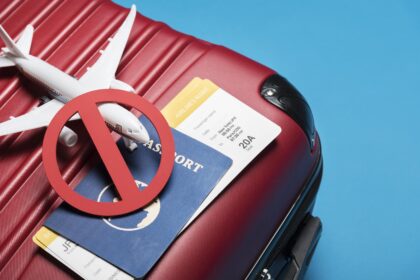Introduction
In recent years, eSIM technology has revolutionized how travelers manage their mobile connectivity abroad. Offering convenience, flexibility, and cost-effectiveness, eSIMs are becoming increasingly popular among globetrotters. Here’s a comprehensive guide to understanding the benefits of eSIM for travelers:
What is eSIM?
- Embedded SIM (eSIM): Unlike traditional SIM cards, eSIM is embedded directly into compatible devices, eliminating the need for physical SIM cards and allowing remote activation of cellular plans.
Benefits of eSIM for Travelers
1. Global Coverage and Convenience:
– Multiple Profiles: Switch between multiple mobile plans or operators without changing physical SIM cards, ideal for travelers visiting multiple countries.
– Instant Activation: Activate eSIMs remotely through QR codes or mobile apps, reducing the hassle of purchasing and inserting SIM cards.
2. Cost Savings:
– Local Plans: Opt for local eSIM plans at destination countries, often offering competitive rates compared to international roaming charges.
– Avoid Roaming Fees: Use eSIMs to access local networks and avoid expensive roaming fees associated with traditional SIM cards.
3. Flexibility and Accessibility:
– Compatibility: eSIMs are supported by an increasing number of devices, including smartphones, tablets, and wearables, enhancing connectivity options for travelers.
– Switching Networks: Easily switch between mobile networks or data plans to find the best coverage and rates during your travels.
4. Security and Reliability:
– Reduced Risk: Minimize the risk of losing or damaging physical SIM cards, as eSIM profiles are stored securely on your device.
– Remote Management: Manage eSIM profiles remotely, enabling quick troubleshooting and activation of new plans without visiting a store.
5. Environmentally Friendly:
– Paperless Activation: Reduce environmental impact by eliminating the need for plastic SIM cards and associated packaging.
READ ALSO: Planning Ideas for Everyone
Frequently Asked Questions (FAQs) about eSIM for Travelers
1. Which devices support eSIM technology?
– eSIM is supported by various smartphones, including models from Apple (iPhone 12 and newer), Google (Pixel series), Samsung (Galaxy S20 and newer), and other manufacturers.
2. How do I activate an eSIM for travel?
– Contact your mobile carrier or visit their website to purchase and activate an eSIM plan. Activation typically involves scanning a QR code or downloading an activation profile provided by the carrier.
3. Can I use eSIM and physical SIM cards simultaneously?
– Yes, many devices support dual SIM functionality, allowing you to use both eSIM and physical SIM cards concurrently for added flexibility.
4. Are eSIM plans more expensive than traditional SIM cards?
– eSIM plans vary by region and carrier but often offer competitive rates comparable to traditional SIM cards. Local eSIM plans can be more cost-effective than international roaming fees.
5. Is eSIM technology secure?
– Yes, eSIM profiles are securely stored on your device and protected by encryption, reducing the risk of SIM card cloning or unauthorized access.
Conclusion
eSIM technology enhances the travel experience by providing travelers with seamless connectivity, cost savings, and flexibility. Whether you’re navigating multiple countries, seeking local data plans, or prioritizing convenience and security, eSIMs offer a modern solution to traditional SIM card challenges. Embrace the benefits of eSIM to stay connected, manage expenses efficiently, and enjoy a hassle-free travel experience without the constraints of physical SIM cards. As eSIM adoption continues to grow worldwide, travelers can expect expanded compatibility and enhanced features, making it an invaluable tool for global connectivity.
In another related article, Pros & Cons of eSIM Cards for Travel






